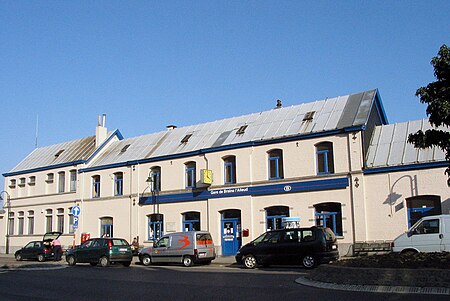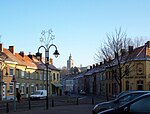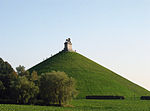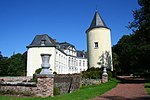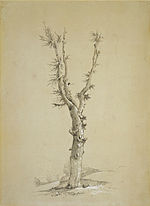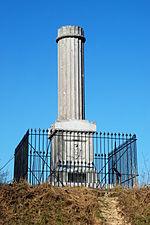The Battle of Waterloo (Dutch pronunciation: [ˈʋaːtərloː] (listen)) was fought on Sunday 18 June 1815, near Waterloo (at that time in the United Kingdom of the Netherlands, now in Belgium). A French army under the command of Napoleon was defeated by two of the armies of the Seventh Coalition. One of these was a British-led coalition consisting of units from the United Kingdom, the Netherlands, Hanover, Brunswick, and Nassau, under the command of the Duke of Wellington (referred to by many authors as the Anglo-allied army or Wellington's army). The other was composed of three corps of the Prussian army under the command of Field Marshal von Blücher (the fourth corps of this army fought at the Battle of Wavre on the same day). The battle marked the end of the Napoleonic Wars. The battle was contemporaneously known as the Battle of Mont Saint-Jean (France) or La Belle Alliance ("the Beautiful Alliance" – Prussia).Upon Napoleon's return to power in March 1815, many states that had previously opposed him formed the Seventh Coalition, while hurriedly mobilising their armies. Wellington's and Blücher's armies were cantoned close to the northeastern border of France. Napoleon planned to attack them separately in the hope of destroying them before they could join in a coordinated invasion of France with other members of the coalition. On 16 June, Napoleon successfully attacked the bulk of the Prussian army at the Battle of Ligny with his main force, causing the Prussians to withdraw northwards on 17 June, but parallel to Wellington and in good order. Meanwhile, a small portion of the French army contested the Battle of Quatre Bras and prevented the Anglo-allied army from reinforcing the Prussians at Ligny as planned. The Anglo-allied army held their ground at Quatre Bras on 16 June, but the withdrawal of the Prussians from Ligny caused Wellington to withdraw north to Waterloo on 17 June. Napoleon sent a third of his forces to pursue the Prussians, which resulted in the separate Battle of Wavre with the Prussian rear-guard on 18–19 June, and prevented that French force from participating at Waterloo.
Upon learning that the Prussian army was able to support him, Wellington decided to offer battle on the Mont-Saint-Jean escarpment across the Brussels road, near the village of Waterloo. Here he withstood repeated attacks by the French throughout the afternoon of 18 June, almost lost the battle, but aided by the progressively arriving 50,000 Prussians who attacked the French flank and inflicted heavy casualties. In the evening, Napoleon assaulted the Anglo-allied line with his last reserves, the senior infantry battalions of the Imperial Guard. With the Prussians breaking through on the French right flank, the Anglo-allied army repulsed the Imperial Guard, and the French army was routed.
Waterloo was the decisive engagement of the Waterloo campaign and Napoleon's last. According to Wellington, the battle was "the nearest-run thing you ever saw in your life". Napoleon abdicated four days later, and coalition forces entered Paris on 7 July. The defeat at Waterloo ended Napoleon's rule as Emperor of the French and marked the end of his Hundred Days return from exile. This ended the First French Empire and set a chronological milestone between serial European wars and decades of relative peace, often referred to as the Pax Britannica.
The battlefield is located in the Belgian municipalities of Braine-l'Alleud and Lasne, about 15 kilometres (9.3 mi) south of Brussels, and about 2 kilometres (1.2 mi) from the town of Waterloo. The site of the battlefield today is dominated by the monument of the Lion's Mound, a large artificial hill constructed from earth taken from the battlefield itself; the topography of the battlefield near the mound has not been preserved.
